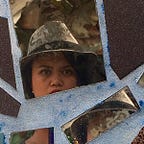Colonial Architecture
A brisk walking tour of Windhoek, Namibia’s capital city, triggered in me a nostalgia for Baguio, the place where I was born and where I lived before moving to New York at the age of thirteen. What brought it all back was the city’s colonial architecture. Much like Baguio, Windhoek is a hybrid of a Western city and the native culturescape — it was initially designed to reassure colonial overseers stationed semi-permanently in the far reaches of a fragile empire.
Windhoek was the colonial capital of German Southwest Africa from the turn of the 19th century through World War I. At around the same period, Baguio changed hands from a Spanish colonial government to an American one after the Philippines was ceded to the Americans at the end of the Spanish-American War in 1898 (the country finally gained its independence after World War II in 1946, although American bases throughout the country continued to operate until US troop withdrawal in 1992).
Gathered here are photographs I took in Windhoek in 2003 (except the Tintenpalast image), which I’ve laid out alongside images of Baguio’s colonial architecture (taken by local photographer, Moe Abellera). The parallels — the meticulous urban planning; the institutions of Church, community gathering centers, parks/sporting grounds, a federal-style government — are at once eerie and familiar, and reveal as much about colonial preoccupations/agendas as it does postcolonial heritage/struggles.
Originally published at hyffeinated.blogspot.com on August 26, 2008.
